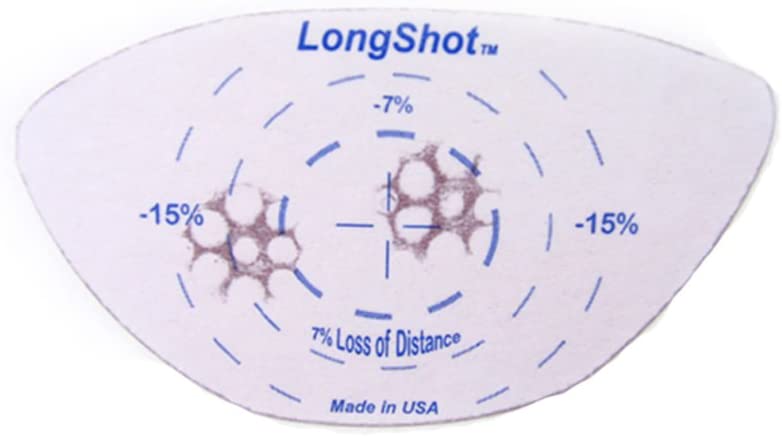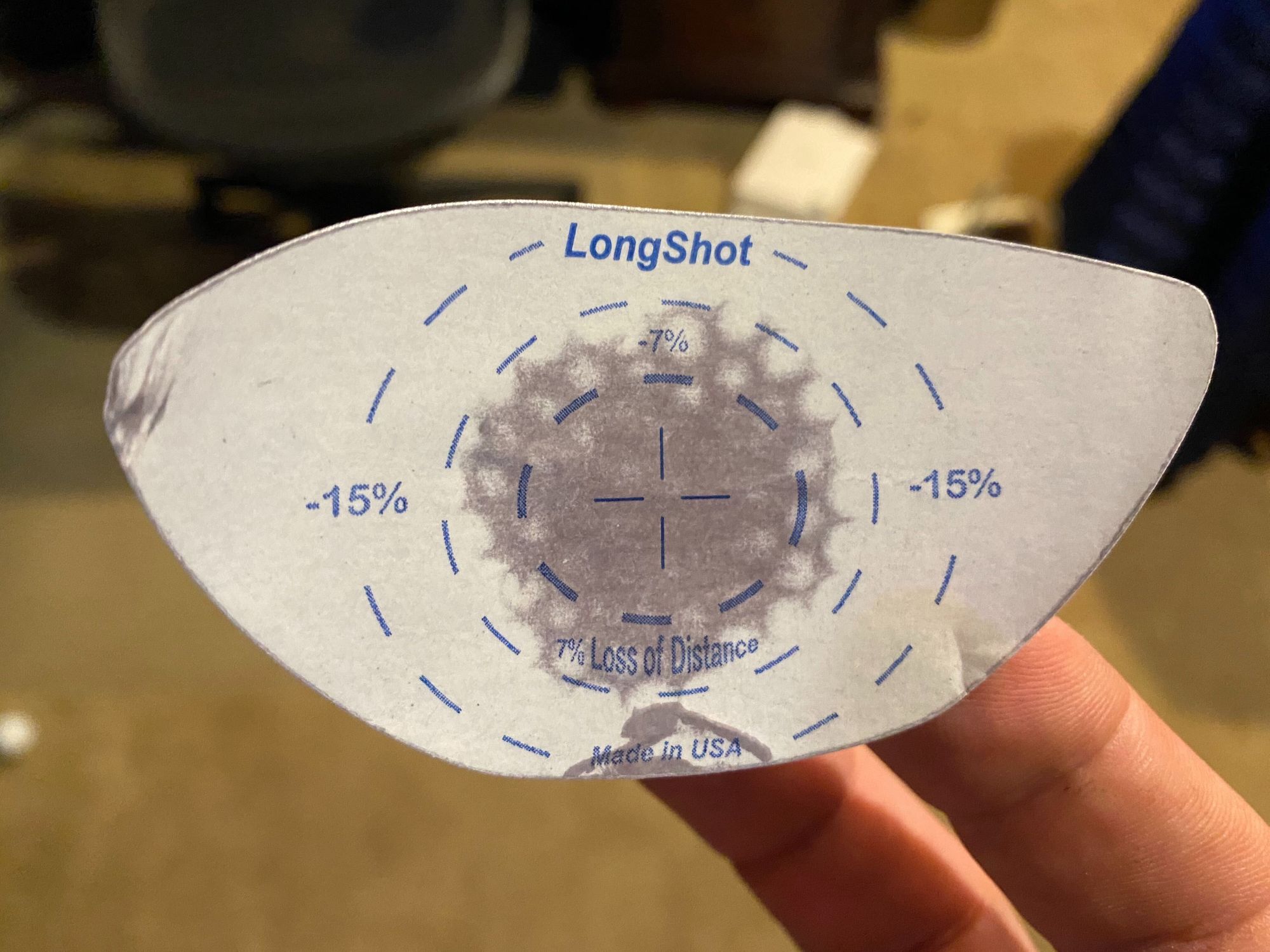My driver is both my most beloved and most hated club in my bag. There are few things in golf that feel better than a well struck tee shot that rewards you with the distinctive sound of hitting the sweet spot and the blissful few seconds of watching the ball go exactly where you wanted it. That might be the most addictive moment in golf for me, and I spend an inordinate amount of time chasing it in the hopes of making it more the rule than the exception. LongShot Overside Impact Labels have become one of my favorite purchases to help me on my path to driver nirvana.
How they work
You buy a roll of 200 labels for about $20 that come in a box with a small slit you can feed the labels through to make them easier to access.
The process is pretty foolproof. Peel off the label and position it on your driver so the sweet spot lines up with target on the sticker.
That's it. Now swing away.
You will notice impact marks for where the ball contacted the face of your driver. Depending on the dispersion of your marks, you can probably get about 4-7 swings per sticker before it starts to become hard to tell where your last shot was hit.

I have found I can get more than 4-7 swings because I often am not hitting the face in the same location. That's a good thing for convenience of swapping stickers, but a bad thing for my swing.
Why I love them
I typically find that I am making impact either too far on the toe or too far on the heel of the club. I make adjustments to my swing and can see visual proof that my adjustments are changing the results.
Sometimes, it is just as simple as changing where I am placing the clubhead at address so that the ball is starting either closer to the heel or the toe, depending on where I am trying to move my impact point. Other times, it can be my distance from the ball.
They are also fantastic for more involved training regimens.
Take a sharpie and draw a line vertically on the label right down the middle. Take a swing and without looking, try to guess where you impacted the ball on the face. Repeat this for 5-10 swings.
Do the same thing, except this time, draw a line horizontally to get a better feel for how to control hitting higher or lower on the face.
Now, draw both a horizontal and a vertical line and try to hit the ball in each quadrant.
Great golfers have a real feel for the face of the club. They can tell where they are missing and adjust in real-time out on the course instead of needing more time on the range.
The results
One of my most prized golf accomplishments came off the course. After struggling like crazy to find the sweet spot on my driver, I worked in my back yard and at the range with these LongShot labels until I started finding the sweet spot with far more consistency.
Eventually, I started playing a game to see how many swings in a row I could hit the sweet spot, with that tight circle right in the middle of the sticker.

My goal was to get to 10 in a row. I finally did it. That sticker now lives on my laptop cover. I have not tried this challenge again recently, but finding the sweet spot is not my biggest issue at the moment. I attribute a lot of that progress to these little stickers.
Stickers vs Spray Powder
A lot of pros and instructors swear by using spray powder on the face of your club to detect impact location. One person told me this was because stickers can effect the spin rate of the ball. I have no idea if that is true.
I do think it is a little cumbersome peeling the stickers off the roll and then onto the club and then peeling them off the club and repeating the process. It was just inconvenient enough that I decided to try the foot spray approach instead.
Honestly, it was just annoying in a different way. The spray powder did not last for as many swings, and required the club to be washed and cleaned afterward. The labels just come on and off.
I also like that they provide a bit of a visual history of your swings through your session. I often chain them together as I peel them off to see the progression of where I was making contact. I can see if I successfully moved the impact spot from one side toward center if that was my problem, or from a wide dispersion to a tighter dispersion.
Spray powder is just gone.
Both products struggle to be useful when the club is wet and cold. The labels tend to just not stick at all in those situations and the spray powder does not either.
Conclusion
I don't know what you are waiting for. Buy a roll of these labels. You will not regret it. There are few ways you can spend $20 to improve your golf game and make those blissful tee shot moments more common. I give LongShot Impact Labels 4 stars out of five, only falling short of perfect because of their challenges in wet weather.

Comments